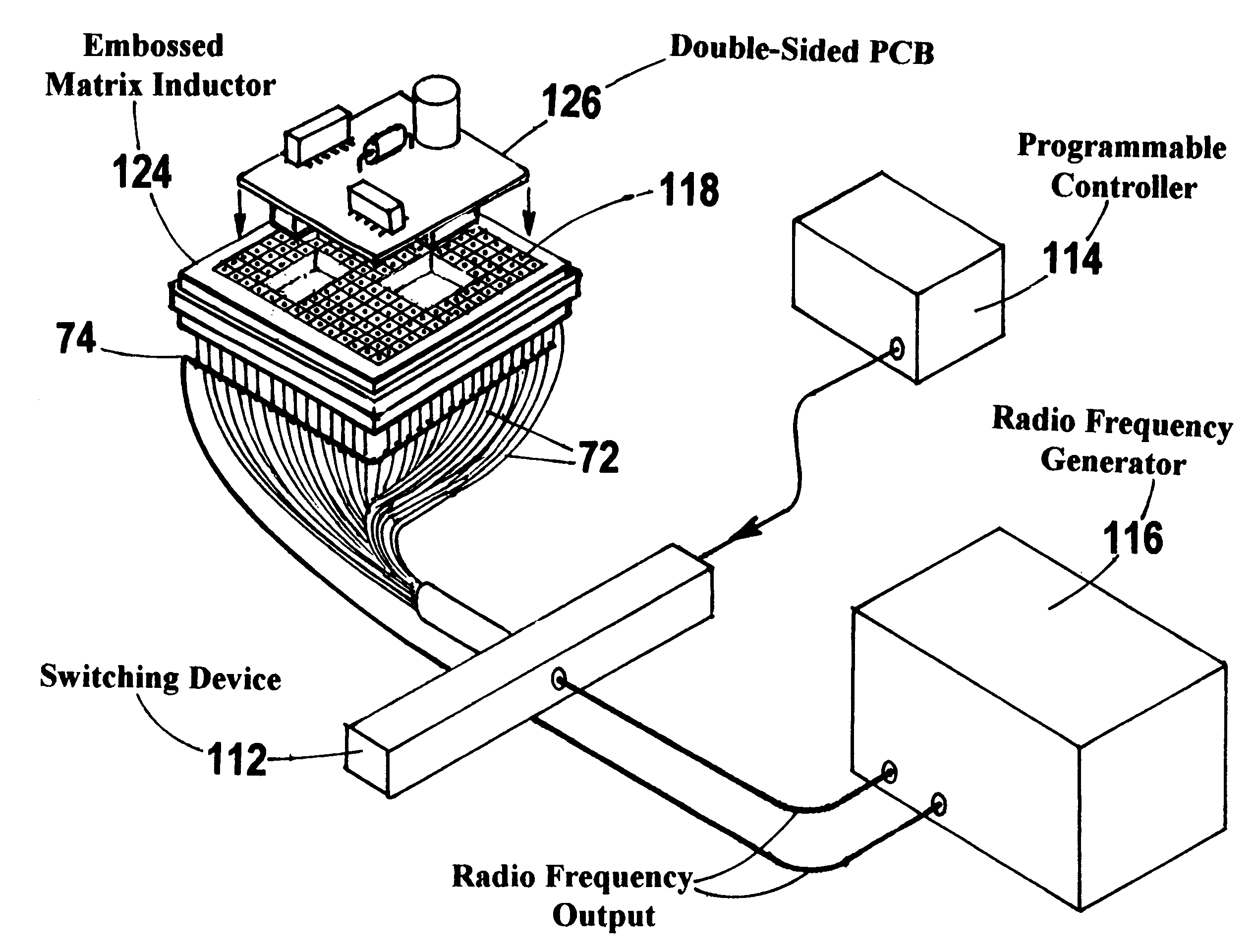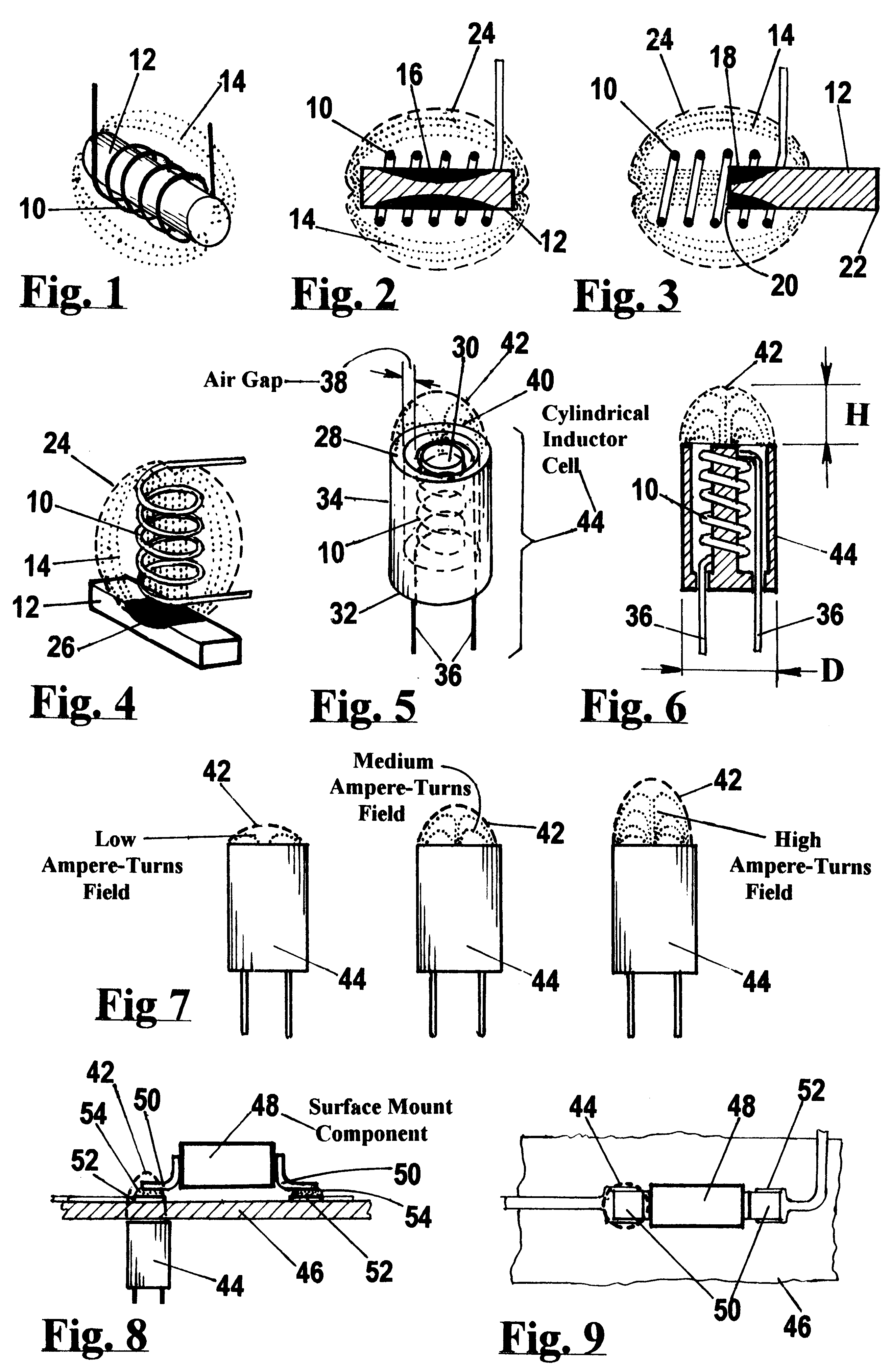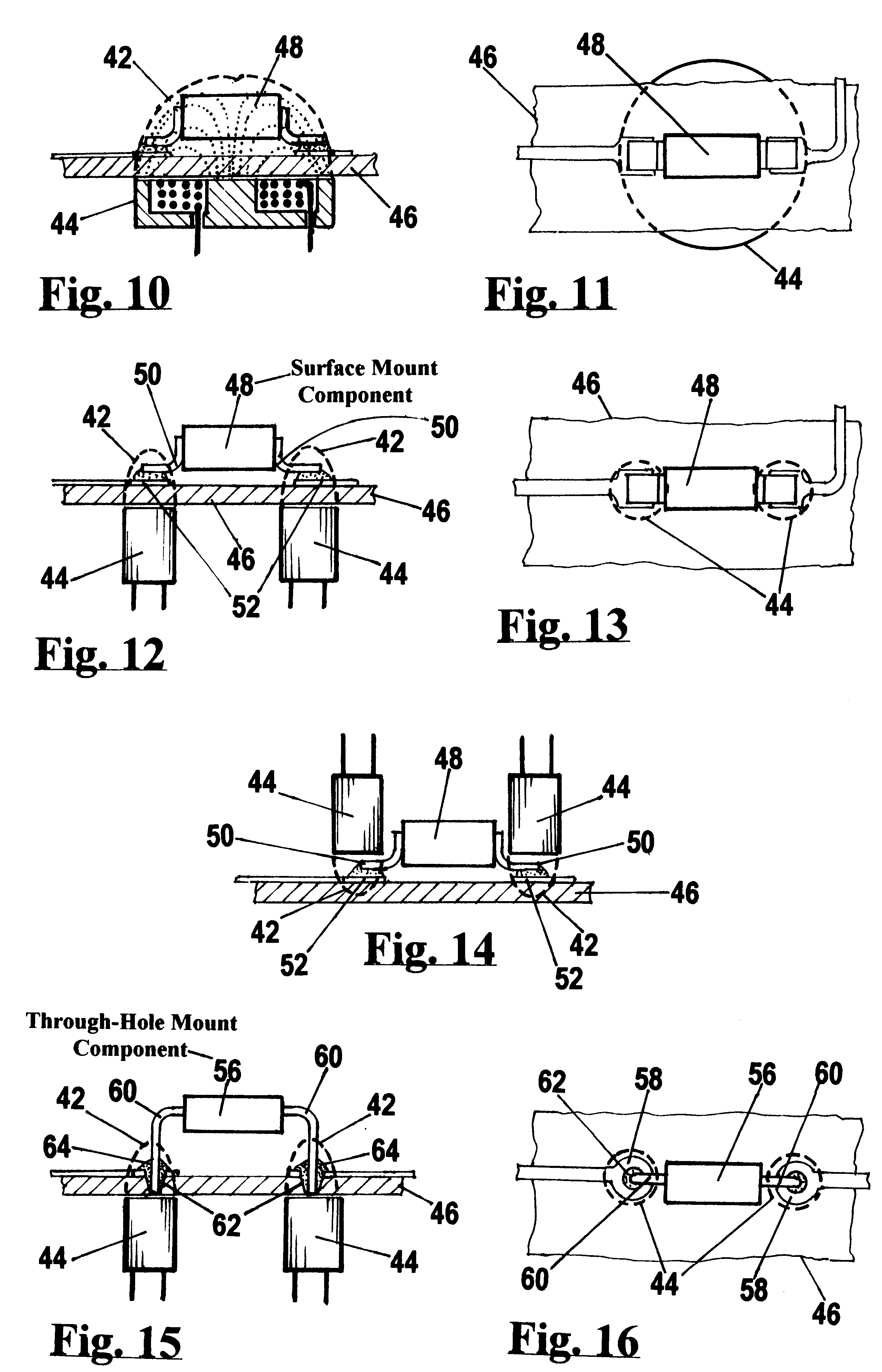Matrix-inductor soldering apparatus and device
- Summary
- Abstract
- Description
- Claims
- Application Information
AI Technical Summary
Benefits of technology
Problems solved by technology
Method used
Image
Examples
Embodiment Construction
Now, aided by FIGS. 17 through 31, I shall illustrate and describe the novel and non-obvious components that form part of the embodiments of my invention. Because the actual embodiments of my invention also include items-of-commerce recognized as public-domain prior-art, the preferred embodiments will be illustrated afterwards in FIGS. 32 through 37 and described in the next part of this specification.
FIG. 17 shows, in perspective view, a multiplicity of cylindrical inductor cells 44 placed side-by-side conforming to a matrix arrangement and held together by an encircling or holding frame 66. Cells' 44 individual air gaps 38 are all facing in the same direction, upwards, and are all contained on a flat upper surface, or top face 68. From every inductor cell 44, a pair of terminals 36-36 emerges beneath the underside or base face 70. One terminal 36 from each and every inductor cell 44 is outfitted with an extension wire 72. The other remaining terminals 36 are all interconnected tog...
PUM
| Property | Measurement | Unit |
|---|---|---|
| Temperature | aaaaa | aaaaa |
| Thickness | aaaaa | aaaaa |
| Dielectric polarization enthalpy | aaaaa | aaaaa |
Abstract
Description
Claims
Application Information
 Login to View More
Login to View More - R&D
- Intellectual Property
- Life Sciences
- Materials
- Tech Scout
- Unparalleled Data Quality
- Higher Quality Content
- 60% Fewer Hallucinations
Browse by: Latest US Patents, China's latest patents, Technical Efficacy Thesaurus, Application Domain, Technology Topic, Popular Technical Reports.
© 2025 PatSnap. All rights reserved.Legal|Privacy policy|Modern Slavery Act Transparency Statement|Sitemap|About US| Contact US: help@patsnap.com



